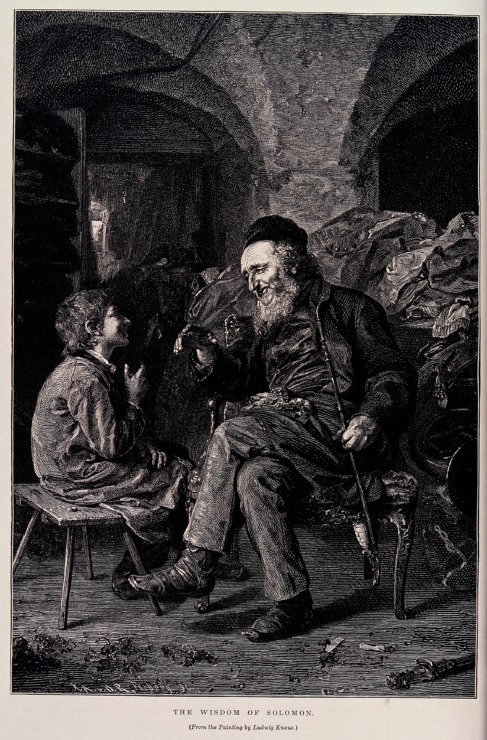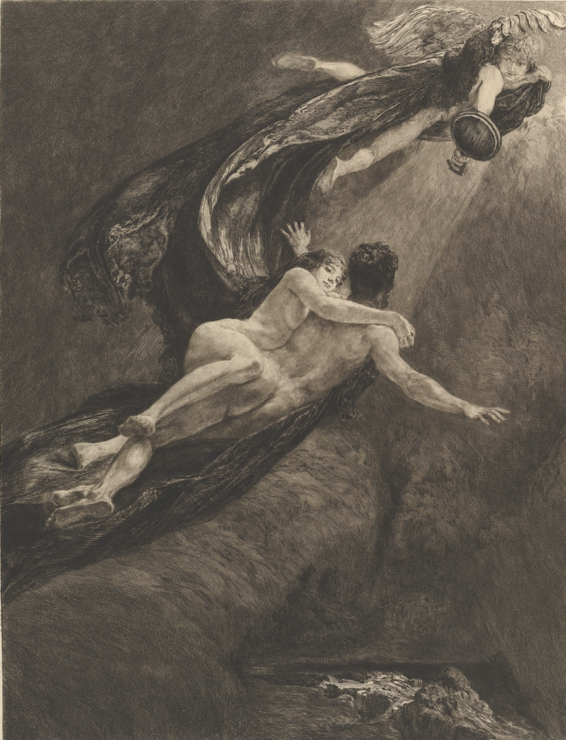< Return to Edgar Allan Poe Poems
Dreams
Oh! that my young life were a lasting dream!
My spirit not awakening, till the beam
Of an Eternity should bring the morrow.
Yes! though that long dream were of hopeless sorrow,
‘Twere better than the cold reality
Of waking life, to him whose heart must be,
And hath been still, upon the lovely earth,
A chaos of deep passion, from his birth.
But should it be—that dream eternally
Continuing—as dreams have been to me
In my young boyhood—should it thus be given,
‘Twere folly still to hope for higher Heaven.
For I have revelled when the sun was bright
I’ the summer sky, in dreams of living light
And loveliness,—have left my very heart
Inclines of my imaginary apart
From mine own home, with beings that have been
Of mine own thought—what more could I have seen?
‘Twas once—and only once—and the wild hour
From my remembrance shall not pass—some power
Or spell had bound me—’twas the chilly wind
Came o’er me in the night, and left behind
Its image on my spirit—or the moon
Shone on my slumbers in her lofty noon
Too coldly—or the stars—howe’er it was
That dream was that that night-wind—let it pass.
I have been happy, though in a dream.
I have been happy—and I love the theme:
Dreams! in their vivid coloring of life
As in that fleeting, shadowy, misty strife
Of semblance with reality which brings
To the delirious eye, more lovely things
Of Paradise and Love—and all my own!—
Than young Hope in his sunniest hour hath known.
-Edgar Allan Poe
Enjoy Artistic Representations of “Dreams” by Edgar Allan Poe

A young boy listens to the wise words of an old man. Wood engraving by Ludwig Knaus.

New Dreams of Happiness (from the series A Love), print, Max Klinger, 1887-1903.
Listen to Readings of “Dreams”
Listen to this Musical Interpretation of “Dreams” by Edgar Allan Poe
That’s it for readings of Dreams by Edgar Allan Poe!
About Edgar Allan Poe
Edgar Allan Poe (1809-1849) published his first collection of poems, Tamarlane, and Other Poems, in 1827, when he was 18 years old. A tendency to run up debts (including for gambling) kept him in constant state of reinvention – college student, poet, short story writer, soldier/officer school, literary journal editor and critic.
The Poe who arises from Symons’ hand (his biographer in The Telltale Heart: The Life and Works of Edgar Allan Poe) is a man who first and foremost was determined to put Southern letters on the map, aiming to wrest control from the literary establishment in New York and New England (Poe aimed some rather pointed arrows at writers like Henry Wadsworth Longfellow). For his own writing, he wanted to be considered a poet. The poems were the important works; the stories were almost after-thoughts, almost dashed off primarily to raise funds. And he always needed money.
His personal life seemed to have stayed a general mess, but he had an enormous impact on both American and world literature. Consider the stories and poems that have been filmed, published, re-published, anthologized, celebrated and widely admired for more than 150 years: “Murders in the Rue Morgue,” “Fall of the House of Usher,” The Raven, “The Tell-Tale Heart,” Annabel Lee, “The Bells,” “Ulalame,” “To Helen.”
We associate Edgar Allan Poe with 19th century gothic. His stories are full of mystery, passion, horror, violence, death, and the supernatural. And yet his poems, especially “The Raven” and “Annabel Lee,” made him famous in pre-Civil War America and established his literary reputation.
Questions and mystery surrounded Poe’s own life and death, and continue even today – we may never know who left three roses and a bottle of cognac on his grave in Baltimore for decades until 2011 (alas, the “Poe Toaster” disappeared or died, to be seen nevermore).
You can read more about Poe’s biography in the articles Poets and Poems: Meeting Edgar Allan Poe and Forgotten Classics, The Telltale Heart by Julian Symons by Glynn Young, from which this biography was compiled.
I hope you enjoyed Dreams by Edgar Allan Poe!
BUY ‘HOW TO WRITE A FORM POEM’ NOW!
